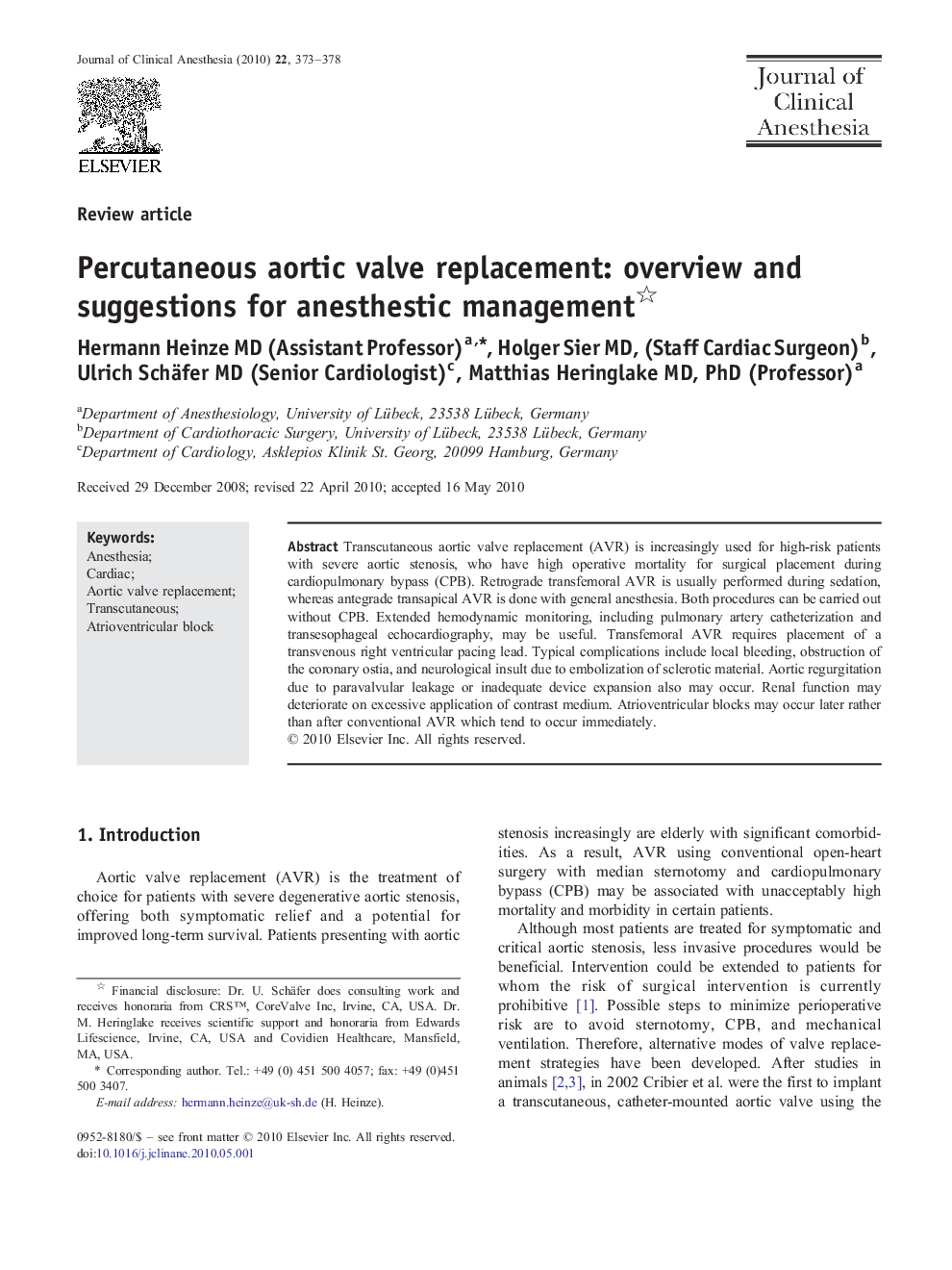| کد مقاله | کد نشریه | سال انتشار | مقاله انگلیسی | نسخه تمام متن |
|---|---|---|---|---|
| 2763076 | 1150738 | 2010 | 6 صفحه PDF | دانلود رایگان |

Transcutaneous aortic valve replacement (AVR) is increasingly used for high-risk patients with severe aortic stenosis, who have high operative mortality for surgical placement during cardiopulmonary bypass (CPB). Retrograde transfemoral AVR is usually performed during sedation, whereas antegrade transapical AVR is done with general anesthesia. Both procedures can be carried out without CPB. Extended hemodynamic monitoring, including pulmonary artery catheterization and transesophageal echocardiography, may be useful. Transfemoral AVR requires placement of a transvenous right ventricular pacing lead. Typical complications include local bleeding, obstruction of the coronary ostia, and neurological insult due to embolization of sclerotic material. Aortic regurgitation due to paravalvular leakage or inadequate device expansion also may occur. Renal function may deteriorate on excessive application of contrast medium. Atrioventricular blocks may occur later rather than after conventional AVR which tend to occur immediately.
Journal: Journal of Clinical Anesthesia - Volume 22, Issue 5, August 2010, Pages 373–378